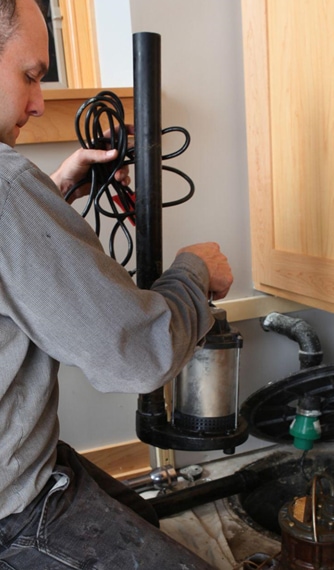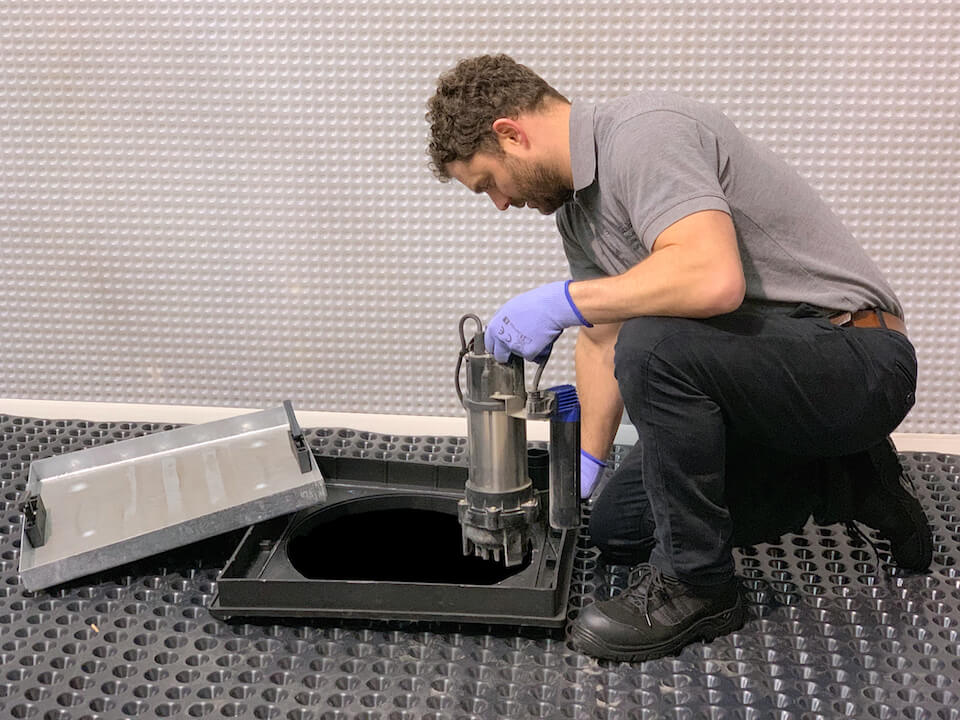Recommended Techniques for Taking Care of a Sump Pump
Recommended Techniques for Taking Care of a Sump Pump
Blog Article
The article directly below relating to Keep Your Sump Pump Clean, It'll Keep You Dry is unquestionably captivating. Have a go and make your own findings.

Sump pumps are vital components in several homes, particularly in areas prone to flooding or too much moisture. They help stop water damages by effectively removing excess water from basements or crawl spaces. However, like any other home appliance, sump pumps call for regular upkeep to ensure they operate properly when needed the most. Cleansing your sump pump is an essential part of its upkeep, and understanding how to do it appropriately can conserve you from costly repairs and potential disasters.
Introduction
Maintaining a tidy sump pump is crucial for its correct functioning and longevity. Neglecting this essential job can bring about clogs, breakdowns, and inevitably, water damage to your residential or commercial property. For that reason, finding out how to clean a sump pump is essential for home owners that depend on these tools to keep their cellars completely dry and protected.
Indicators of a Dirty Sump Pump
Understanding when your sump pump requires cleaning is crucial for stopping prospective breakdowns. Some usual signs that indicate a filthy sump pump consist of odd sounds throughout procedure, reduced water flow, and noticeable particles in the pit. If you see any one of these signs, it's vital to cleanse your sump pump promptly to prevent any further problems.
Getting ready for Cleansing
Prior to you begin cleaning your sump pump, it's essential to take some security precautions. Begin by turning off the power to the pump to avoid any kind of electric crashes. Furthermore, use proper safety gear, such as handwear covers and goggles, to safeguard yourself from dust, particles, and possible microorganisms.
Recognizing the Sump Pump
Before diving into the cleansing procedure, it's necessary to have a basic understanding of exactly how a sump pump works. Usually set up in a pit or container below the cellar flooring, a sump pump includes a number of essential components, consisting of a pump, a float button, and a discharge pipe. When water builds up in the pit, the float button triggers the pump, which then pumps the water out through the discharge pipe, away from the structure's foundation.
Step-by-step Guide to Cleaning Up a Sump Pump
Shutting down the Power
Begin by separating the power supply to the sump pump to prevent any crashes while cleaning.
Looking For Proper Performance
Before re-installing the pump, do a quick examination to make sure that the float switch activates the pump properly. Pour some water into the sump pit and observe the pump's operation. If every little thing is functioning correctly, you can reassemble the pump and reconnect the power supply.
Removing Debris and Dirt
Utilize a pail or an inside story to remove any visible particles, dirt, or sediment from the sump pit. Dispose of the debris properly to stop it from blocking the pump or the discharge pipeline.
Cleaning the Pump and Drift Switch Over
Once the pit is free from debris, meticulously remove the pump from the pit. Examine the pump and the float button for any kind of indications of damages or wear. Make use of a soft brush or towel to cleanse the surface areas and eliminate any accumulated grime.
Flushing the System
After cleansing the pump and float button, purge the sump pit with tidy water to get rid of any type of continuing to be dirt or debris. This will certainly help ensure that the pump runs smoothly and successfully.
Upkeep Tips to Keep Your Sump Pump Clean
Along with periodic cleaning, there are a number of upkeep pointers you can follow to keep your sump pump in ideal problem:
Conclusion
Cleaning your sump pump is a vital aspect of its upkeep and ensures that it runs properly when you require it the most. By following the steps described in this guide and integrating regular maintenance right into your regimen, you can expand the life expectancy of your sump pump and shield your home from water damage.
6 STEPS ON HOW TO CLEAN A SUMP PUMP PROPERLY
UNDERSTANDING SUMP PUMPS
Your sump pump plays a crucial role in protecting your home by managing and removing excess water. It primarily functions as a “shield”, guarding your basement against the damaging effects of water accumulation. The pump is housed in a sump pit in the lowest part of your basement, and its job is to pump out any water that collects there.
During heavy rainfalls or when snow melts rapidly, water can infiltrate your basement, posing potential risks like flooding, structural damage, and harmful mold growth. Here, the sump pump springs into action, pumping out the intruding water and directing it away from your home.
SAFETY FIRST
Before cleaning, remember to prioritize safety. Disconnect the sump pump from the power source to prevent any accidental electric shocks. Also, wear sturdy gloves to protect your hands from any sharp or dirty components within the pump.
REMOVE THE SUMP PUMP
After ensuring your safety, the next step is to remove the sump pump from its pit. Doing this might require careful maneuvering as you don’t want to damage any pump components. Once removed, clean the sump pit to remove any accumulated debris or sludge.
INSPECT THE PUMP
Inspect the pump for any visible signs of wear or damage. Check the power cord, float switch, and impeller housing. If any components look worn out or damaged, consider replacing them to ensure optimal performance.
CLEAN THE PUMP
Thoroughly clean the pump with warm, soapy water. Make sure to rid it of any dirt, gravel, or other debris that might impede its performance. You can use a toothbrush to clean the small, hard-to-reach parts of the pump.
REINSTALL THE SUMP PUMP
Reinstall the pump into the sump pit Make sure it’s positioned correctly to remove the water effectively Once it’s back in place, reconnect it to the power source TEST THE PUMP
Finally, pour some water into the pit to ensure the pump works correctly. It should start automatically and begin pumping out the water; if it doesn’t, check the power source and the positioning of the pump.
Remember, while cleaning your sump pump is an essential part of home maintenance, hiring a professional plumber for a thorough inspection and cleaning at least once a year is also important. This will ensure that your pump is in optimal condition, ready to protect your home from potential water damage.
BEST PRACTICES FOR CLEANING SUMP PUMP DISCHARGE PIPES
Regular Inspection: Regularly inspect your discharge pipes, especially during heavy rainfall or snowmelt periods. Look for any signs of blockage or damage. Early detection of problems can prevent serious issues down the line. Periodic Cleaning: Over time, sediment and debris can accumulate in the discharge pipes, impeding the flow of water. Regular cleaning helps keep the pipes clear and functioning efficiently. You can use a high-pressure water jet to effectively clean the pipes. Insulation During Winter: In colder climates, discharge pipes can freeze, blocking the outflow of water. Protect your discharge pipes from freezing temperatures by insulating them with foam pipe insulation. This will ensure the sump pump can continue to discharge water even in freezing conditions. Proper Positioning: The discharge pipe should be positioned to direct water away from your home’s foundation. Improper positioning can lead to water seeping back into the basement. Ensure the pipe is long enough and angled correctly. Installation of a Check Valve: A check valve prevents water from flowing back into your sump pit after the pump has pushed it out. Installing a check valve helps maintain the efficiency of your sump pump and reduces the risk of flooding. Minimize Pipe Turns: Every curve or turn in the discharge pipe can decrease the efficiency of water flow. By minimizing turns and bends in your discharge pipe, you can increase the efficiency of your sump pump. https://www.fullspeedplumbing.com/how-to-clean-a-sump-pump-properly9999/

We had been made aware of that editorial about through a friend on another site. Do you know about another person who is sincerely interested in the topic? Why not promote it. I recognize the value of your readership.
Visit Url Report this page